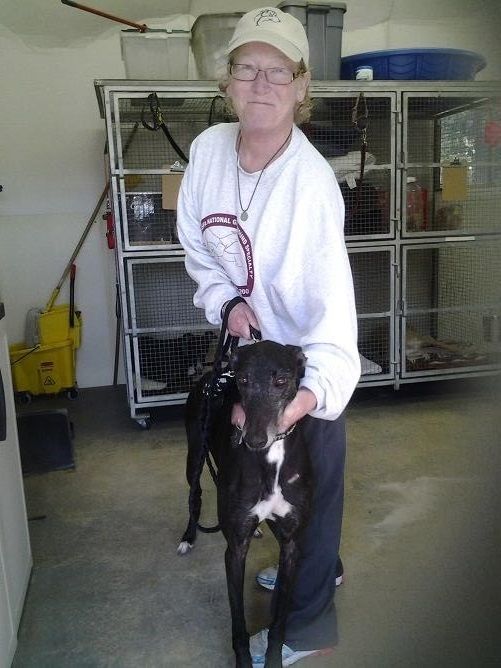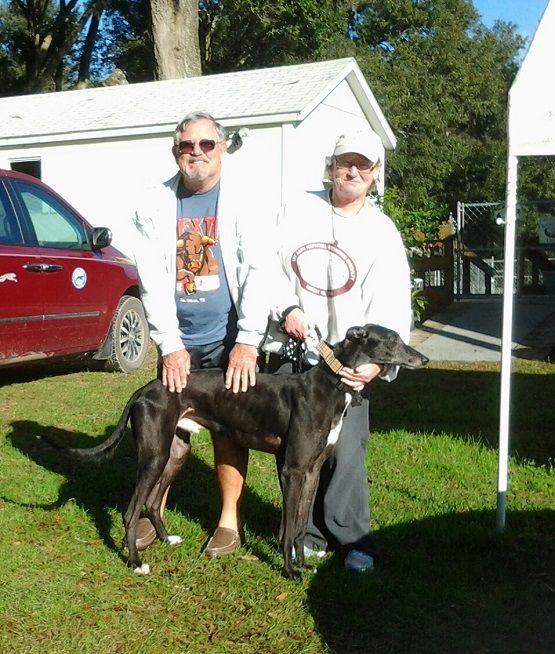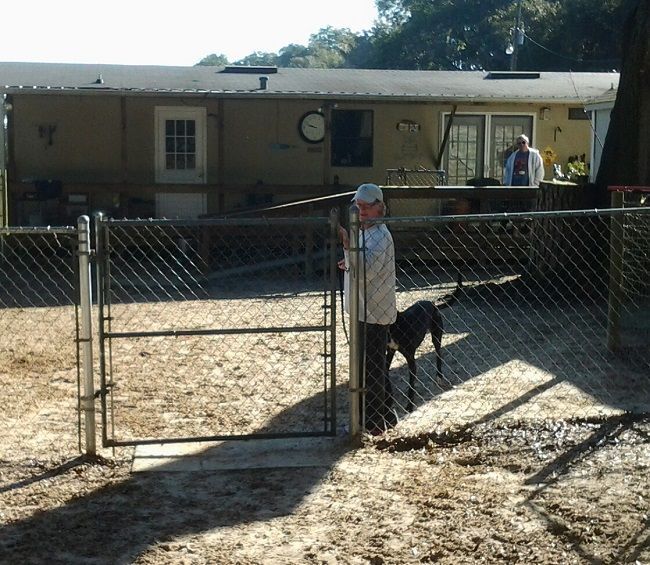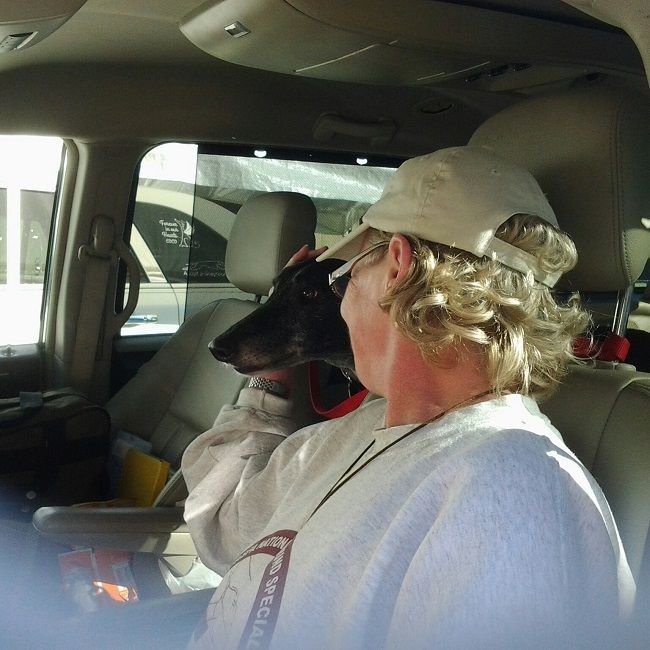
Burpdog
-
Posts
7,830 -
Joined
-
Last visited
Content Type
Profiles
Forums
Events
Gallery
Store
Articles
Posts posted by Burpdog
-
-
-
Send me the pictures and I'll post them (i.e., no excuses)
-
Magic lived on roasted chicken from WalMart for 13 months. Very little variance at all. Sending prayers!
-
Isaac hated the smell of lamb cooking. Some dogs will act as you describe.
-
Dogs are not suppose to take tylenol and I'm not surprised she is not eating with that medicine combination. The product insert on Rimadyl says if they stop eating, stop the med immediately. She could bleed out.
TBD panel that is negative doesn't mean anything. If they are in crisis they can be negative for erlichia.
WHY ALL THE CONCERN ABOUT EHRLICHIA
IN ADOPTED GREYHOUNDS?
Suzanne Stack, DVM
Studies have shown that it can take as long as 5-7 years following a bite from an Ehrlichiacarrying tick for a dog to show symptoms. By then, a greyhound is long gone from the tickinfested racing kennel or farm and possibly living in an area where Ehrlichia is unheard of. The greyhound may present with a variety of mysterious ailments, some of which can be serious and fatal if not treated. Veterinarians working with adopted greyhounds should maintain a high index of suspicion for Ehrlichia.
Ehrlichia canis is the most common Ehrlichia species infecting dogs, but there are others (E. platys, E. risticii, E. equi) and researchers suspect that there are many more. E. canis is a rickettsia (an organism somewhere between a bacteria and parasite) carried by the brown dog tick - a common if not universal problem in racing kennels. Greyhounds from all over the country mingle together sharing their ticks, making racing kennels a smorgasbord of tick-borne diseases.
Acute (first few weeks) signs of Ehrlichia, such as runny eyes/nose and cough (resembling distemper) would not be expected in adopted racers. Virtually all adopted greyhounds will be in the chronic stage. There may be vague signs such as lethargy, fever, anorexia, and weight loss. Greyhounds may have bleeding, bone marrow suppression, eye disease, neurologic signs, neck/spinal pain, polyarthritis, enlarged spleen, enlarged lymph nodes, or kidney disease. Bloodwork may show anemia, low white blood cell counts, low platelets, increased protein (hyperglobulinemia), and increased ALT/ALKP.
Ehrlichia testing is done with antibody titers. Titers measure the body’s immune response
to the bug, not the amount of bug in the dog’s body. Most labs titer from 1:20 to
:1,000,000 or more. In general, the more chronic the infection, the higher the titer. The
IDEXX in-office “combo” test (heartworm/Lyme/Ehrlichia) catches titers over 1:100.
While sick dogs usually test positive, they might not if:
1. They have a poor immune response (the reason why a very sick dog sometimes tests negative).
2. They carry an Ehrlichia strain other than the standard E. canis the lab tests for.
3. They have a titer <1:100 on the IDEXX test, or
4. There is variation between labs.
There is not necessarily a correlation between the severity of the disease and the titer number.
All positive titers should be treated.
Ehrlichia dogs respond dramatically and quickly (within days) to doxycycline dosed at 5 mg per pound twice daily. For this reason, greyhounds should be started on doxycycline as soon as Ehrlichia is suspected. If not immediately available at the veterinary office, all human pharmacies carry doxycycline (a tetracycline family antibiotic). Often patients are vastly improved by the time their titer results are back from the lab. This doxycycline trial can be as useful as the titer results in determining whether to continue with treatment. The standard regimen we use in Arizona where Ehrlichia is endemic is 5 mg per pound twice daily for 2 months. Doxycycline must always be given with food - otherwise it may upset the stomach. Alternatively, Ehrlichia can be treated (offlabel) with Imizol, an injectable drug approved for the treatment of Babesia, another tick-borne disease. The Imizol protocol is two injections two weeks apart.
There is a poor correlation between resolution of infection and serum antibody titers. In patients with high antibody titers, the antibody concentrations decline very slowly (over years) following effective therapy. In many patients, the antibody titers persist at high concentrations indefinitely. The PCR (polymerase chain reaction) test, which tests either positive or negative (no numeric value) for Ehrlichia DNA in the bloodstream, may be used for follow-up testing, but is not perfect either.
The most reliable indices of response to therapy are clinical signs, CBC changes (i.e. anemia, platelet counts), and serum globulin concentrations. A reasonable approach is to monitor recovered dogs with a CBC and titer at six-month intervals as long as the dog remains clinically normal. If clinical signs develop or the CBC becomes abnormal, re-treat, using Imizol if doxycycline was used the first time around. The majority of Ehrlichia dogs will require only one treatment course, but owner and veterinarian should remain watchful in order to recognize a relapse.
-
Yes, a complete tick & VF panel (at Protatek in Arizona -- not expensive) and a complete panel (they can do both for around $100)
Where are you located?
-
I'd try acupuncture (preferable CHI certified). In addition to the acupuncture helping there are Chinese meds that can help.
Huston eats 4 or 5 different things twice a day. One thing that is constant, but he can't have a lot of at one time because of the pancreatitis threat, is Stella & Chewy's dehydrated patties. I break 1/4 to half a one on his meal if he's not too interested if I think he has not eaten enough.
For instance, this morning he ate: Fresh Pet, frozen BilJac with Stella & Chewy's on it, and I can't remember
 Last night it was Fresh Pet, beef kibble, roasted turkey, turkey kibble, canned meat with his Fresh Factors in it, yogurt and a number of different cookies. Oh, I remember this morning he ate a little Honest Kitchen duck.
Last night it was Fresh Pet, beef kibble, roasted turkey, turkey kibble, canned meat with his Fresh Factors in it, yogurt and a number of different cookies. Oh, I remember this morning he ate a little Honest Kitchen duck.Whatever he eats as a sample, he'll stop eating when I buy it. I have 4 or 5 kibbles plus all the other stuff I've mentioned.
-
They do love Bag Balm

-
Sending my deepest sympathy
 I have a book for the kids if you email me I will send it: Burpdog@msn.com
I have a book for the kids if you email me I will send it: Burpdog@msn.com -
A bad nail trim is very hard to get over for the dog. All the years I've done nails, I had one female that I took to the vet and she was so bad he had to sedate her (needless to say, she didn't go often). If it were me, I would not do his nails myself for a long time or do one at a time. I assume the bad nail trim has grown out to the point where your trim is not painful physically?
Try a muzzle with peanut butter in it even if you are only doing that one nail. If you do take him to the vet, do the same thing -- muzzle with a little pb.
From another site after suggestions the person try professional help:
If you're insistant on trying it on your own, try a non-confrontational approach like the NILIF (Nothing In Life Is Free) program. This program may be effective if the problem is resource guarding (ie growling when you try to take food or a toy away or try to move them from a chair or the bed).
Other contributors have said: Sometimes it's not a good idea to teach your dog not to growl. This is especially true if there are aggression issues. A dog's growl can be his way of telling you something is making him uncomfortable to the point he is going to snap. I've seen where people have taught their dog not to growl, so now they just bite without warning.I have changed my views on growling over the years and I agree with not correcting for growling. Many years ago (when I was young and foolish
 ) I did resident obedience training and 80% of the dogs I trained were biters. I'd much rather have a growl for a warning than a dog that just skips that part and goes in for the bite or kill.
) I did resident obedience training and 80% of the dogs I trained were biters. I'd much rather have a growl for a warning than a dog that just skips that part and goes in for the bite or kill.I believe NILIF guidelines are in Greyt Information forum
-
Thankfully, Kari mentioned this to me when I was looking for Huston's calcitriol.
Regular price: $188, with coupon from GoodRx at CVS: $68.76
-
Glad she is home!
-
If it's staffed I would leave her overnight. Sending lots of good thoughts!!!
-
With Dobes we would do shoulder height so they stayed up on their feet. Since we don't have to worry about that in our pets, anywhere from 14 to 22" depending on the size of the dog.
-
We can agree to disagree. I have never and I will never subject an old dog to a diaper. It hurts my heart to even think about
-
Yes to more frequent meals and I personally would never, and have never, put a diaper on an old dog.
-
Oops turds are common in the elderly
 Chiropractic adjustments help
Chiropractic adjustments help -
Thinking of you & sending prayers
-
I'd skip the VWD test. Very, very few greyhounds have it and as above said, if they have Amicar on hand you should be fine.
Wonder why they use Iso instead of sevo?
Also, I wonder if they have improved the VWD test. Years ago it was worthless
-
This vet has great reviews and is certified by AVCA and CHI
Leanne Lipton DVM Washington DC202-821-3893
-
Nick: where do you live? Chiropractic and acupuncture will help
 Fresh Factors is very good for all the things you are mentioning also.
Fresh Factors is very good for all the things you are mentioning also. -
Kibble: Solid Gold holistique Blendz is the lowest fat content made in a kibble that I have found (6%). Shadow did well on it for months.
Canned is very low fat so you can choose most any brand/kind and mix it in.
Treats: apple chips, pitted dates, rice cakes and Burpdog biscuits

I've been keeping Huston's fat content down to 12% and lower and so far, he's doing well. There are many foods that are at 10% and 12% fat and are good kibbles: Organix weight management is 10%, Solid Gold Hundenflocken is 10%, Solid Gold Mmellenia is 12%, BilJac kibble reduced fat 10%
Jodie was put on a homemade diet and did very well. I agree with Redhead, if it's not chronic, you can go back to a diet reasonable in fat. Some of the kibbles are way too high at 16%+ in fat.
-
Are you sure your 11 mo old boy doesn't have either hook or whipworms? To be absolutely sure you need to take a sample every day for 3 days in a row. I would treat for worms at that age. Many greyhounds do not do well for bowel issues when put on pred
-
Sending my sympathy

All I could think of as I was reading was how much he was loved and how fortunate all of you are to have met and loved each other. What a character -- I'm sure he is having lots of fun in Rainbow Land!






Hunger Strike
in Food and dietary discussion
Posted
If she will eat cooked turkey meatballs, I would cook every day if necessary. You indicate she has lost too much weight. Something is wrong -- dogs don't personalize emotions like we do.
If you can't cook every day, why not make a batch and freeze them and pull them out when you need them?
Try cooked meat or different grain free kibbles. If there is one ingredient she doesn't like or need in a dog food, she will refuse to eat it. I rely more on their nose than my sight. Remember: they can smell every ingredient in the food, not just "dog food" like we smell.
Magic ate rotisserre (sp) chicken from WalMart every day for 13 months except for a few times she ate kibble and once or twice roast beef. They eat what they need, not what we want them to eat!